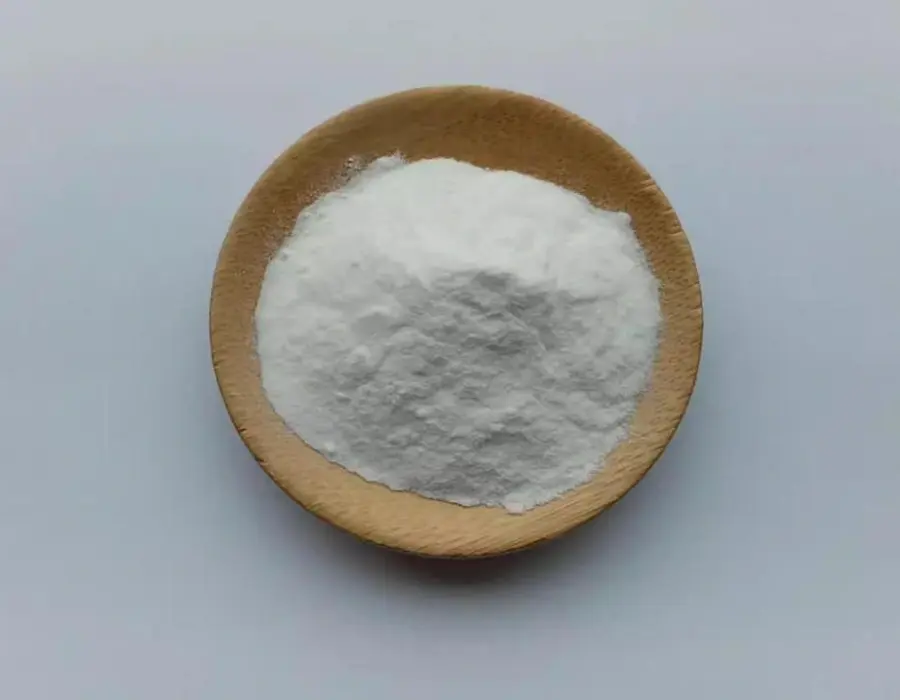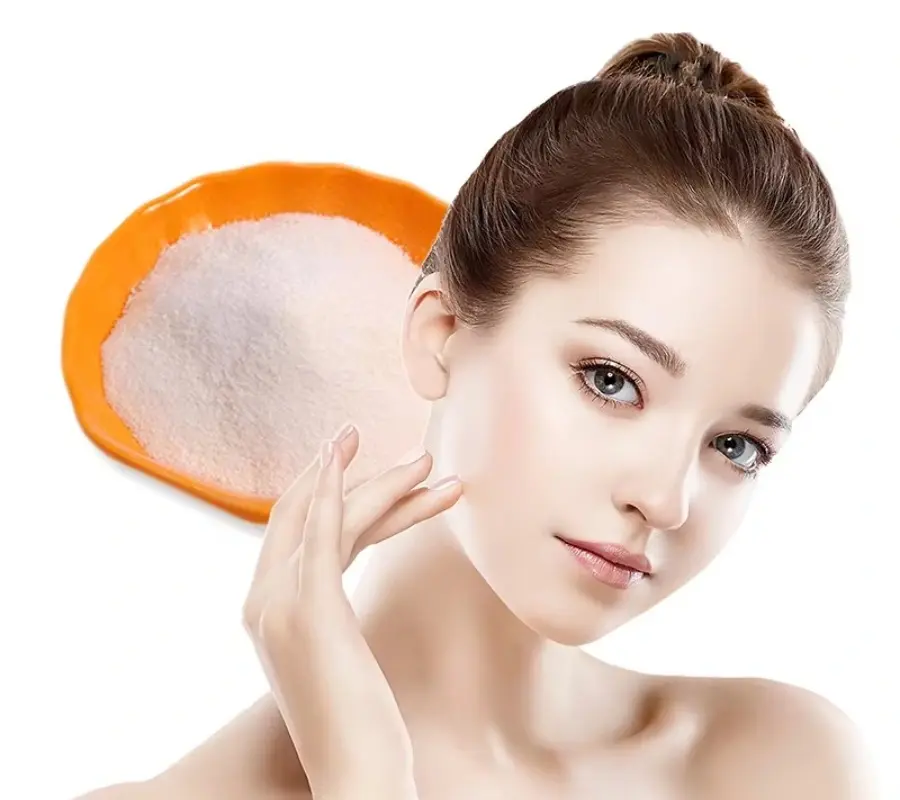Is Chitosan Hydrochloride Good for Skin?
Is Chitosan Hydrochloride Good for Skin?
What is chitosan hydrochloride?
Chitosan hydrochloride is a derivative of chitosan, a chitosan derivative with strong cationicity, which can be directly dissolved in water.
Chitosan hydrochloride is widely present in lower animals and plants in nature, such as chitin in the shells of arthropods (shrimp and crabs), which is obtained by deacetylation reaction after adding alkali and heating. This substance is non-toxic to the human body and will not cause secondary pollution to the environment, so it has a wide range of applications in many fields.
Chitosan hydrochloride is a product obtained by hydrochloric acid treatment of chitosan. It inherits the excellent properties of chitosan, such as biocompatibility, degradability, antibacterial properties, etc., and also has some new properties.
Chitosan hydrochloride has good water solubility, which makes it more convenient to prepare biomaterials such as aqueous solutions, gels, and films. In addition, chitosan hydrochloride also has a high charge density and strong ion exchange capacity, which provides possibilities for its application in drug carriers, ion exchangers and other fields.
Application fields and effects of chitosan hydrochloride
Health care products and cosmetics field
1. Health care products
Chitosan hydrochloride can be made into capsule health care products, which are convenient to eat and can be dissolved and absorbed, giving full play to the health care function of chitosan.
2. Cosmetic additives
Chitosan hydrochloride can be used as an absorption promoter for hydrophilic drugs and natural nutritional cosmetics.
Food field
Chitosan hydrochloride maintains the quality of chitosan, has good film-forming and antibacterial properties, and can be used as an additive and preservative for food, fruits and vegetables.
Medical field
1. Wound and burn dressings
Chitosan hydrochloride can be used to prepare wound and burn dressings because it has good hemostatic effect.
2. Medical dressings
When used as medical dressings, chitosan hydrochloride has antibacterial, promotes wound healing, stops bleeding, absorbs wound exudate and other effects.
3. Drug carrier
Chitosan hydrochloride can be directly soluble in water and is a chitosan derivative with strong cationicity. It is expected to become a drug carrier under mild preparation conditions.

What are the preparation methods of chitosan hydrochloride?
Method 1: Direct reaction method
1. Chitosan pretreatment: Add industrial-grade chitosan to hydrochloric acid solution and stir to dissolve it.
2. Adjust pH: Add alkaline solution to adjust pH value and precipitate.
3. Washing: Wash the precipitated precipitate with water and organic solvent in turn to obtain food-grade chitosan.
4. Reaction: Add hydrochloric acid ethanol solution to food-grade chitosan while stirring for reaction.
5. Post-treatment: Filter to obtain filtrate and residue, the filtrate is reserved, and the residue is washed and dried and crushed to obtain chitosan hydrochloride.
Features: This method simplifies the traditional preparation method, reduces production costs, saves reaction time, and improves production yield.
Method 2: Patent publication method
1. Preparation of mixed solution: Mix 6%~36% hydrochloric acid by weight with an organic solvent (such as ethanol, propanol, isopropanol, acetone, etc.) in a volume ratio of 1:0~4 to form a hydrochloric acid-organic solvent mixed solution.
2. Mixing reaction: Mix chitosan powder with a deacetylation degree of 60% to 100% with the above-mentioned mixed solution at a mass volume ratio of 1:1 to 1:2.5 and stir evenly.
3. Standing and drying: Place at 0℃~80C for 0~8 hours, and finally dry the resulting mixture.
Method 3: Innovative process method
The main purpose of this method is to achieve large-scale industrial production of chitosan hydrochloride, reduce production costs, and protect the chitosan structure from destruction and degradation to the maximum extent. The specific steps include reacting a mixture of hydrochloric acid, water and ethanol with high-quality chitosan (deacetylation degree 75%~90%) at room temperature to obtain a high-viscosity, high-molecular-weight chitosan hydrochloride product.
Advantages: This method can reduce the occurrence of side reactions, prevent chitosan from being oxidized and discolored, and finally obtain a high-viscosity, white chitosan hydrochloride product.
Effects of Chitosan Hydrochloride on Human Health
Chitosan hydrochloride is obtained by deacetylation of chitin, which is widely present in nature. Its chemical name is polyglucosamine (1-4)-2-amino-B-D glucose. Chitosan hydrochloride is a primary derivative of chitin. Its chemical structure is a high molecular weight alkaline polysaccharide polymer with cations, and it has unique physical and chemical properties and biological activation functions.
Due to its strong cationicity, chitosan hydrochloride is expected to become a drug carrier under mild preparation conditions. It not only has good biocompatibility and biodegradability, but also can undergo chemical reactions under specific conditions to generate chitosan derivatives with different properties, thereby expanding the application range of chitosan.
As a new type of pure biological water-soluble water-absorbing hemostatic material, chitosan hydrochloride is mainly used for hemostatic gauze, hemostatic sponges, bandages, sanitary napkins, diapers, etc. It has strong anti-inflammatory, sterilizing and analgesic effects. It begins to gradually degrade 2 hours after absorbing water (blood), and finally degrades into chitosan monomers, which can be absorbed by the human body without pollution.
Chitosan hydrochloride can be made into wound healing agents, burn dressings, and hemostatic materials. It has obvious anti-inflammatory, anti-swelling, and antibacterial effects, and can greatly improve the regeneration, repair, and healing speed of wounds.
How is the application effect of chitosan hydrochloride in cosmetics?
As a derivative of chitosan, chitosan hydrochloride has many unique physical and chemical properties, which makes it have a wide range of application potential in the field of cosmetics.
Chitosan hydrochloride can be directly dissolved in water to form a solution with strong cationicity. This property enables it to promote the absorption of nutrients or drugs by body cells, so it can be used as an absorption enhancer in cosmetics. It can promote the skin's absorption of skin care ingredients or active substances, thereby improving the efficacy and use experience of cosmetics.
Chitosan hydrochloride has good film-forming and antibacterial properties, which enables it to be used in the preparation of medical dressings and carriers. In cosmetics, it can be used as a protective film to help lock in the moisture of the skin while preventing the growth of bacteria and fungi, helping to keep the skin healthy and hygienic.
The moisturizing properties of chitosan hydrochloride are also a major advantage in cosmetics. It can absorb a large number of water molecules, thereby forming a moisturizing layer on the surface of the skin, reducing the evaporation of water, and keeping the skin moisturized and soft.
Chitosan hydrochloride has a wide range of application prospects in cosmetics. Its absorption enhancer, film-forming, antibacterial and moisturizing properties make it an ideal cosmetic raw material. With the advancement of technology and the increasing demand for natural raw materials, the application of chitosan hydrochloride in the cosmetics industry will receive more and more attention.

_1737093401309.png)
